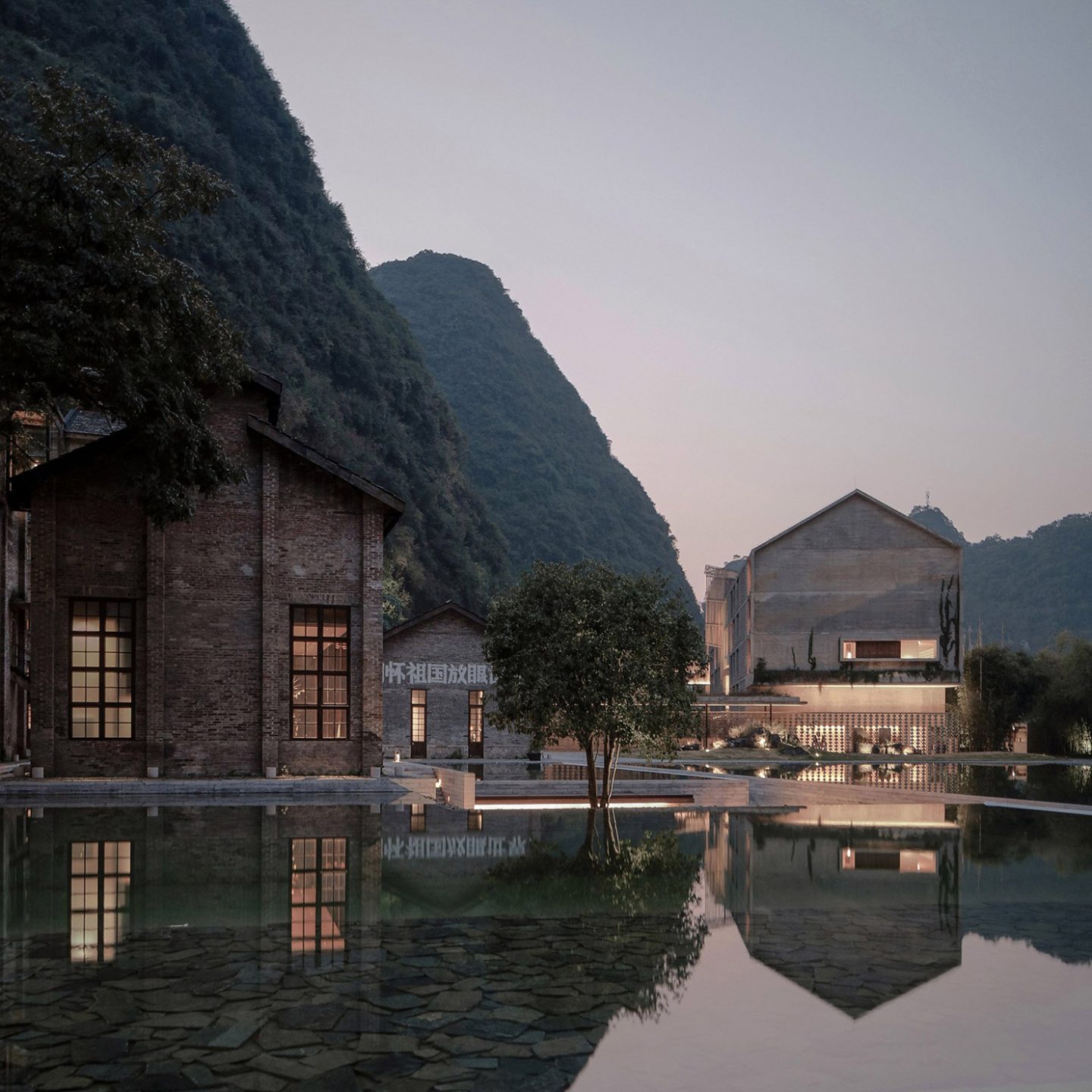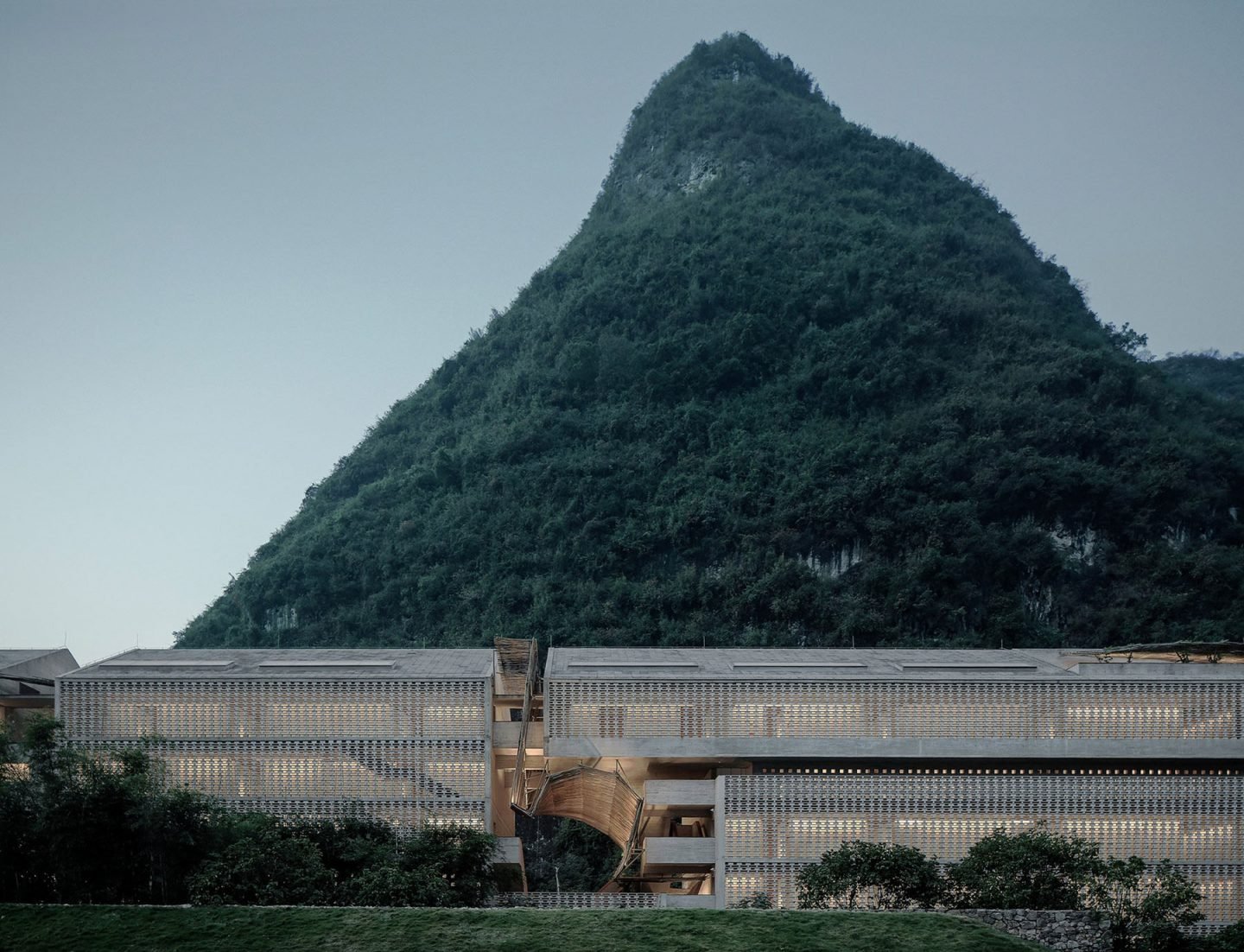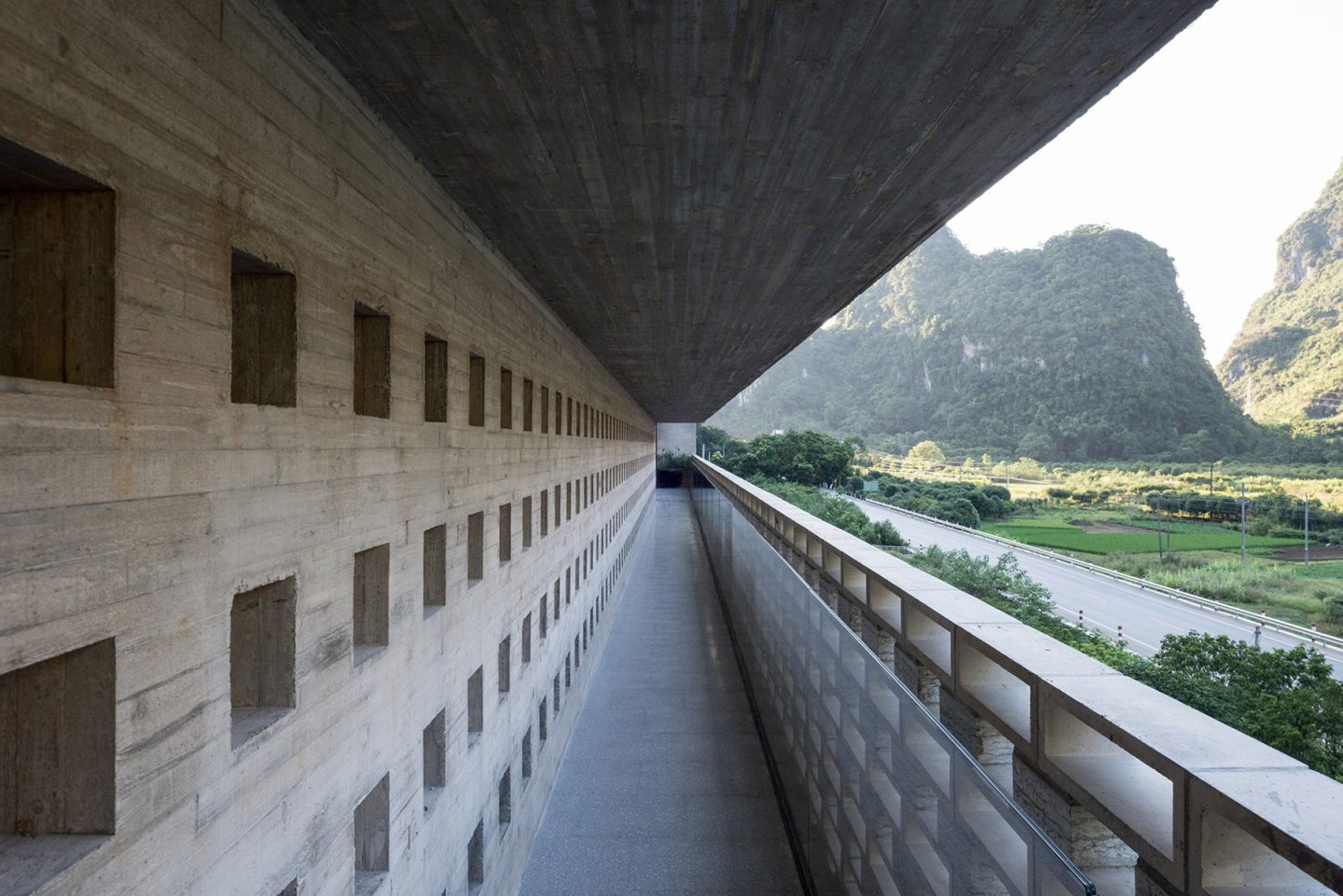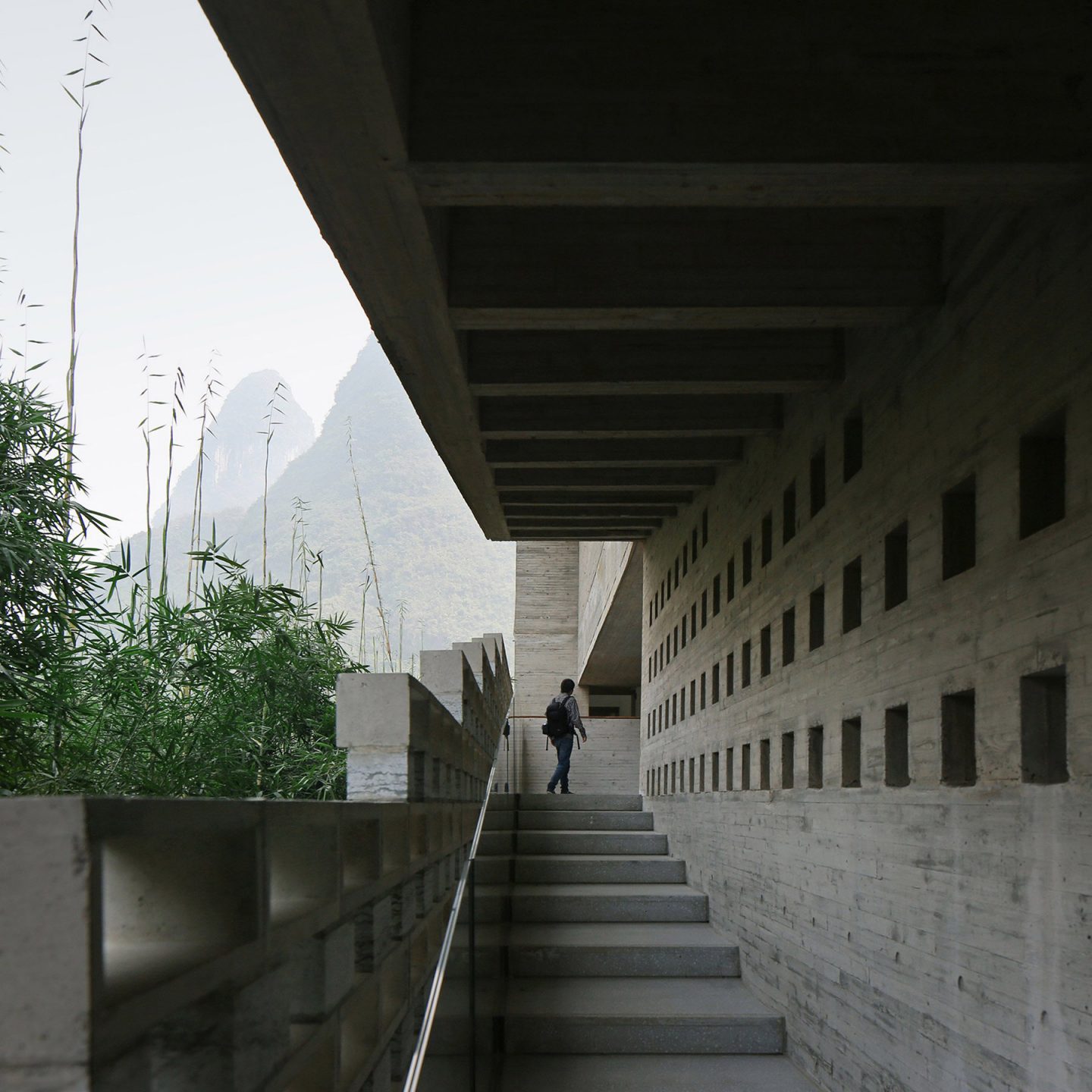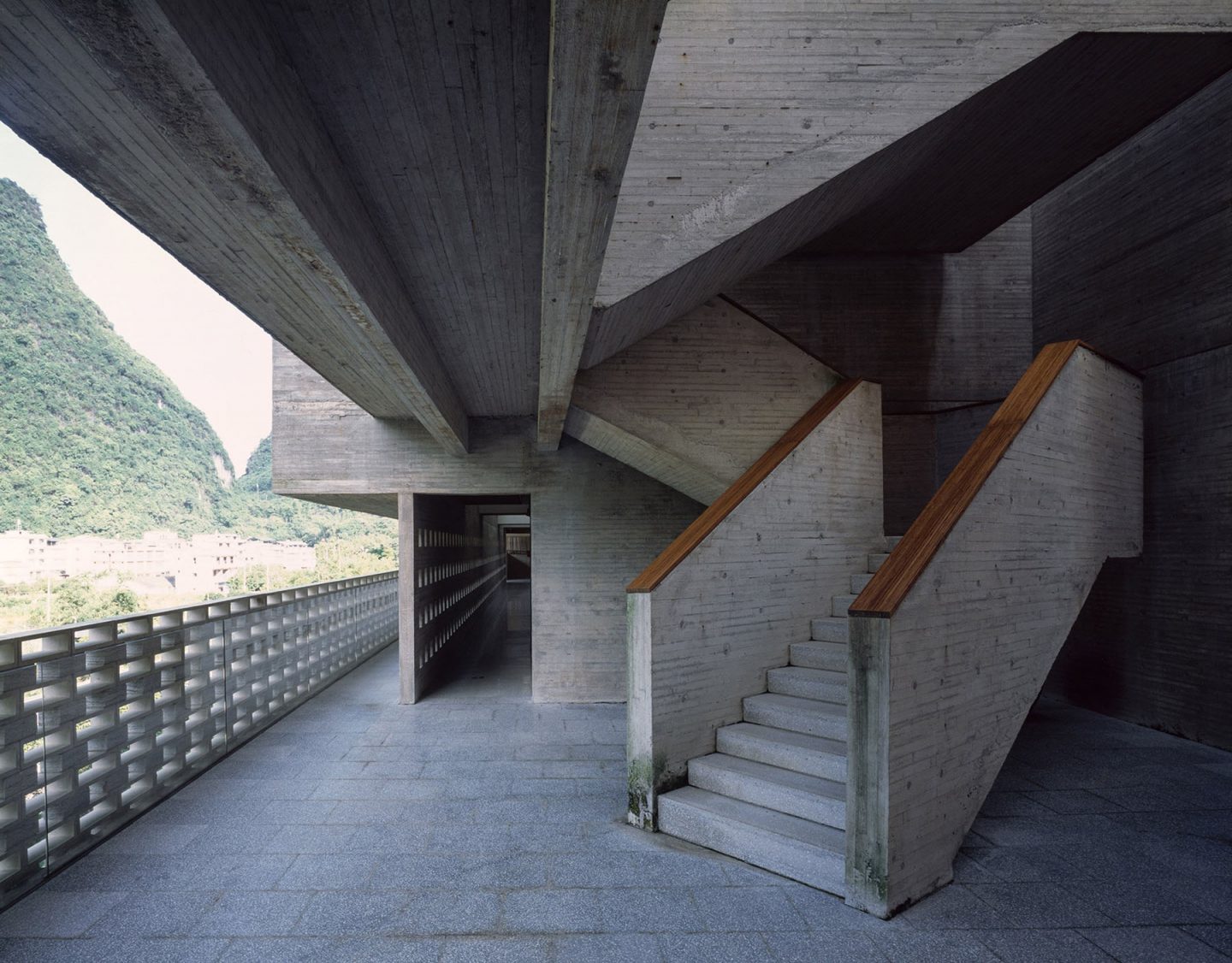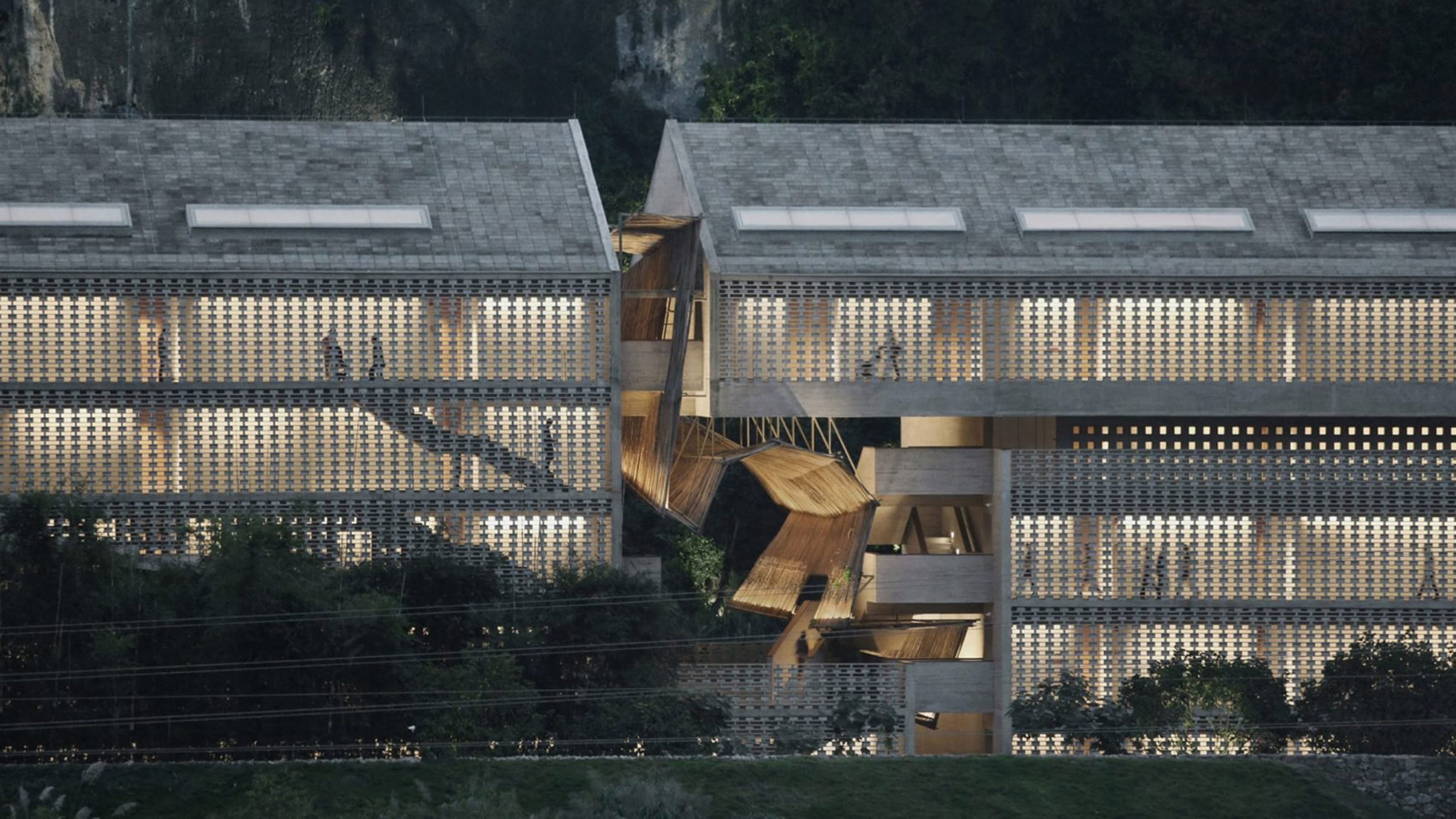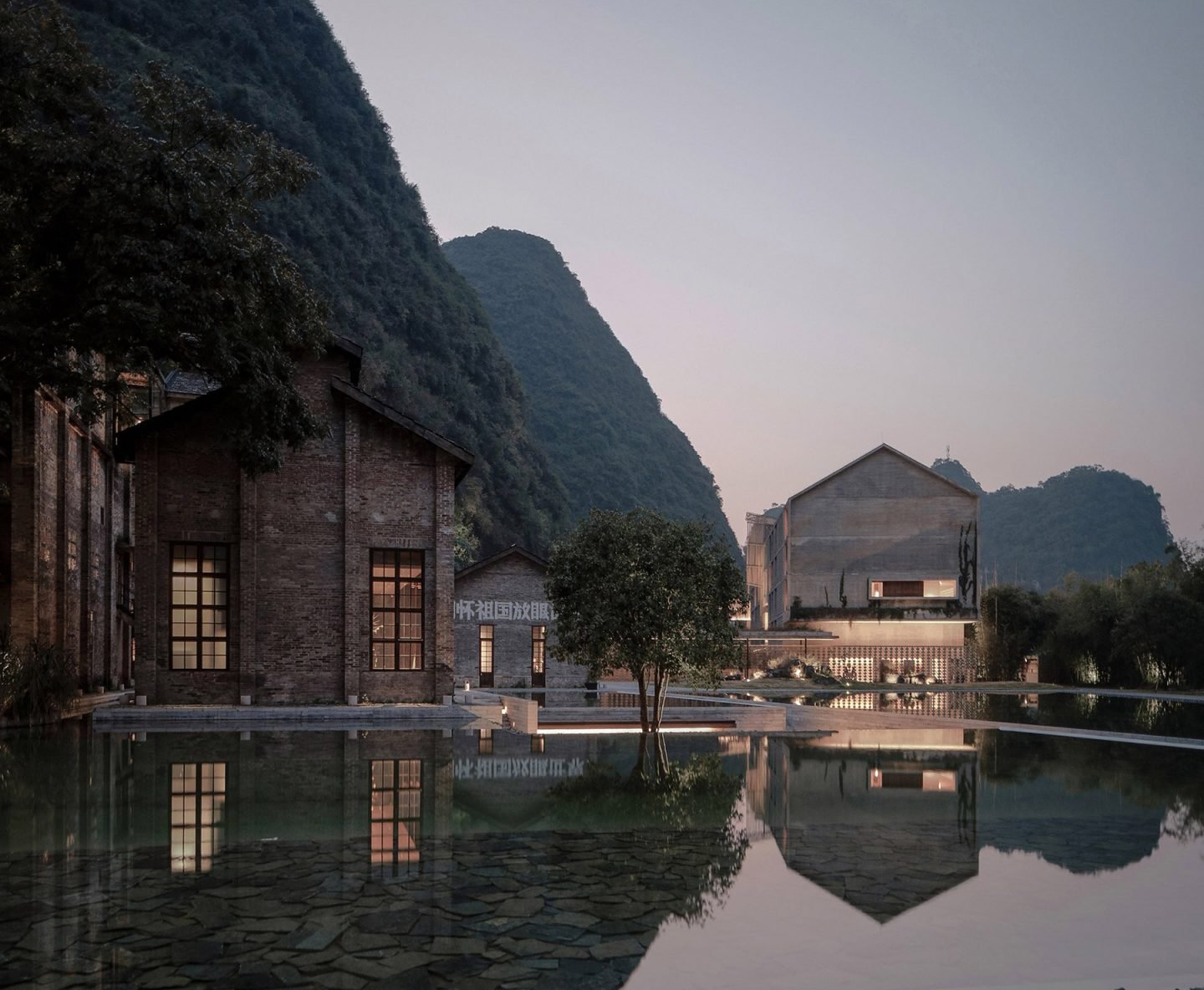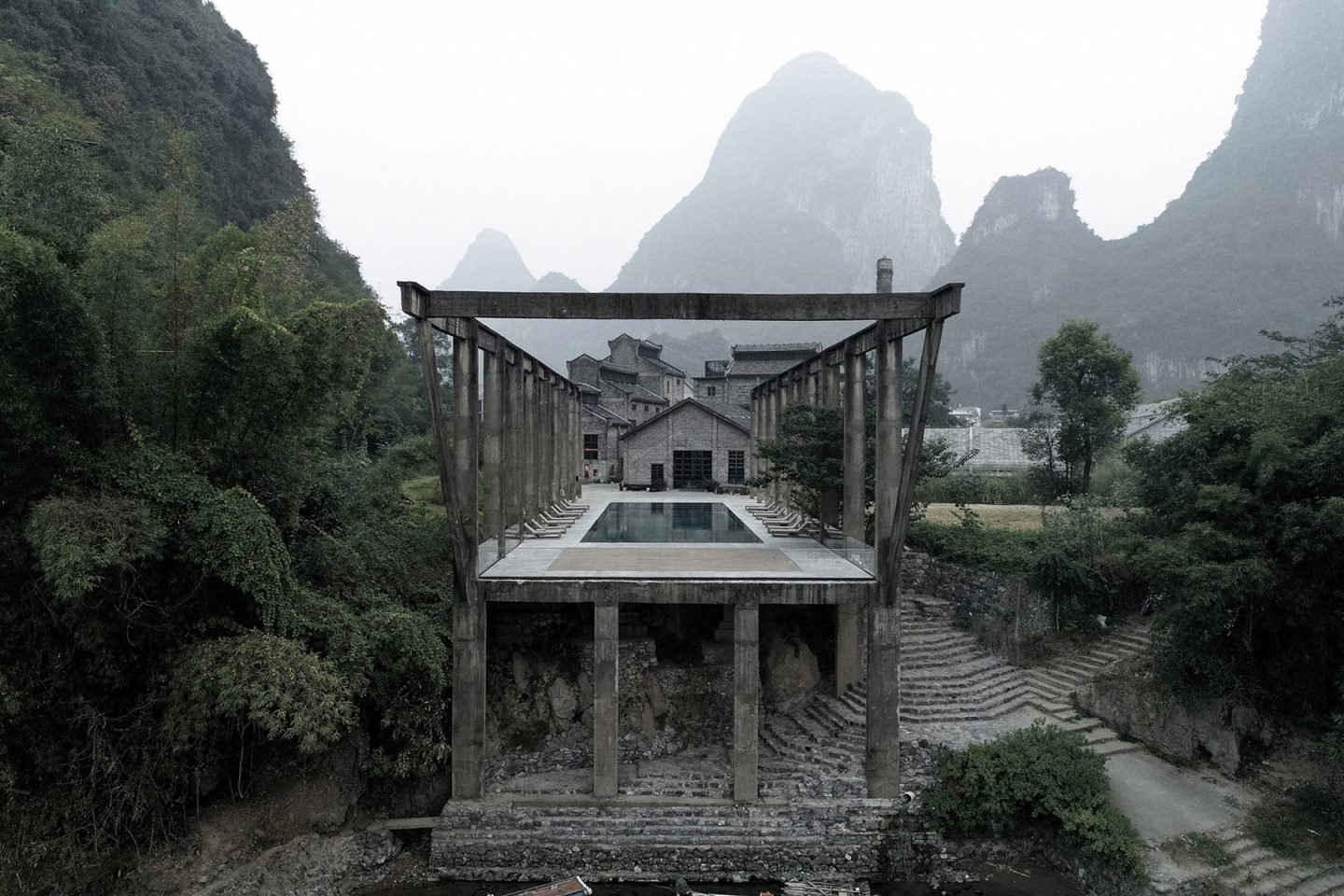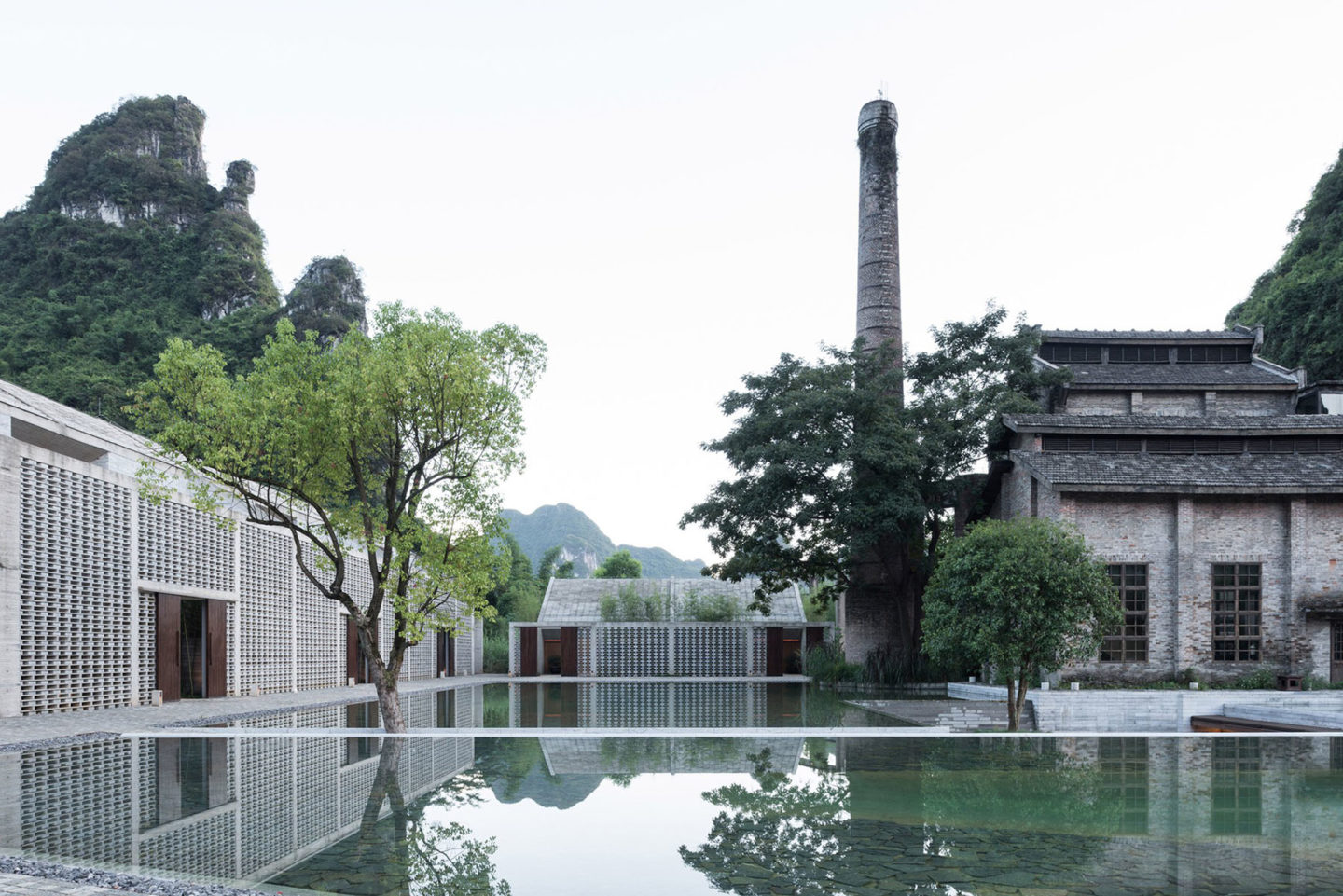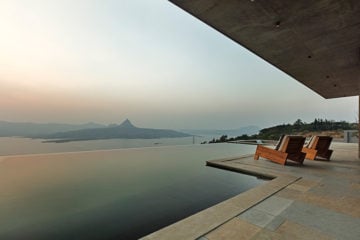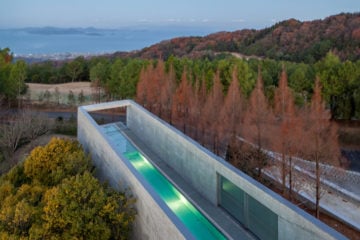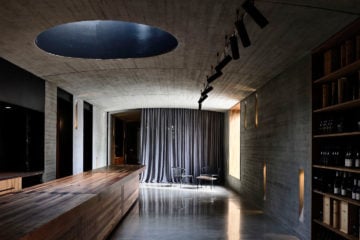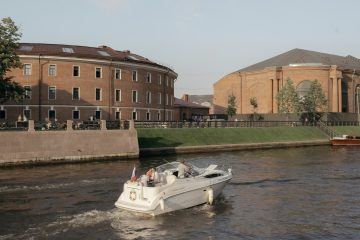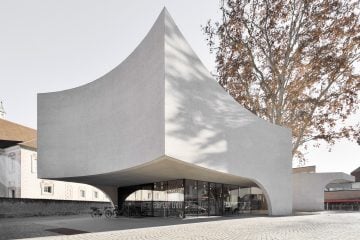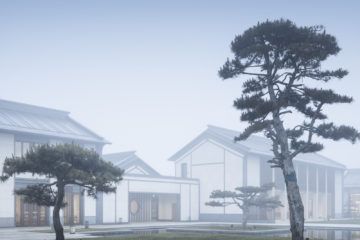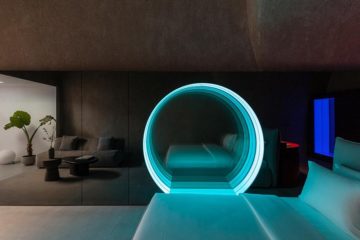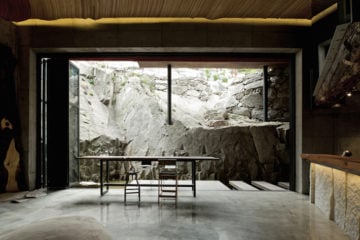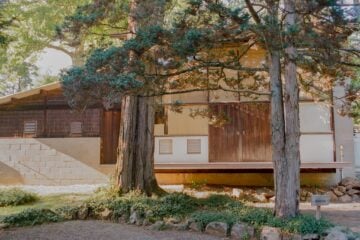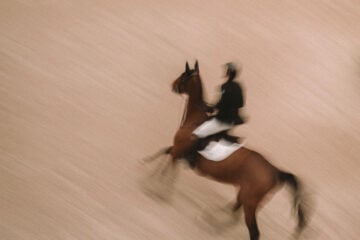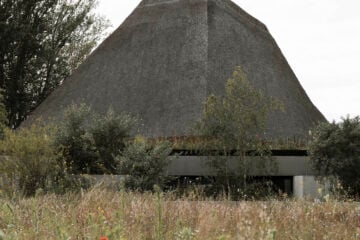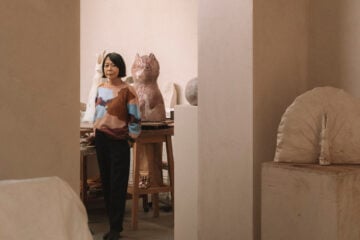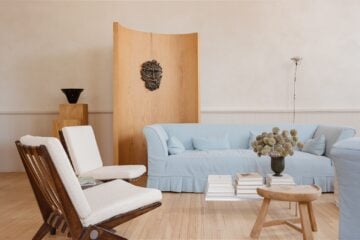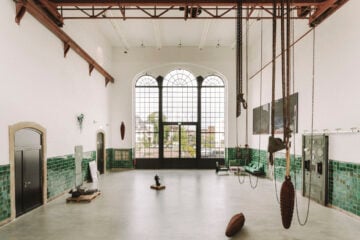Located in the picturesque region of China’s Yangshuo County, the 1960s sugar mill now houses the hotel bar, cafe, hall, gallery, and library. The new buildings, which are arranged around a sunken plaza, have been constructed using contemporary versions of the methods and materials previously used — maintaining a cohesive relationship with the old mill. The guest rooms were built using hollow concrete blocks and board-formed concrete — a lightweight interpretation of the former materials. The old industrial truss, which looks towards the river, has been repurposed as a swimming pool. Vector Architects designed the new buildings with a simple elegance, limiting distraction from the old sugar mill. The muted color palette of the resort is strikingly complemented by the rich green of the dramatic landscape. The burst of color seeps in through the immense glass windows that frame communal spaces and appears in rippled reflections on the large-scale ponds that weave amongst the new architecture. Similarly, open-air lobbies and perforated walkways are key features in allowing the admiration of the enveloping scenery. Cave-like structures have been implemented to mimic those found in the surrounding mountains, opening up views of the adjacent landscape. The central cavern hosts a sculptural bamboo structure that climbs the stories of the original sugar mill. Ju Bin of Horizontal Space Design was responsible for the interior design, borrowing from the industrial aesthetic of the mill to bridge the gap between the old and the new.
